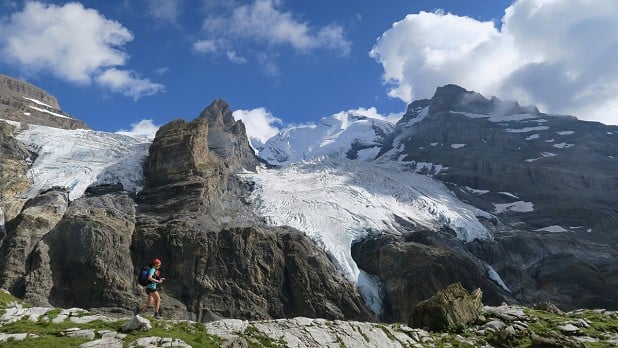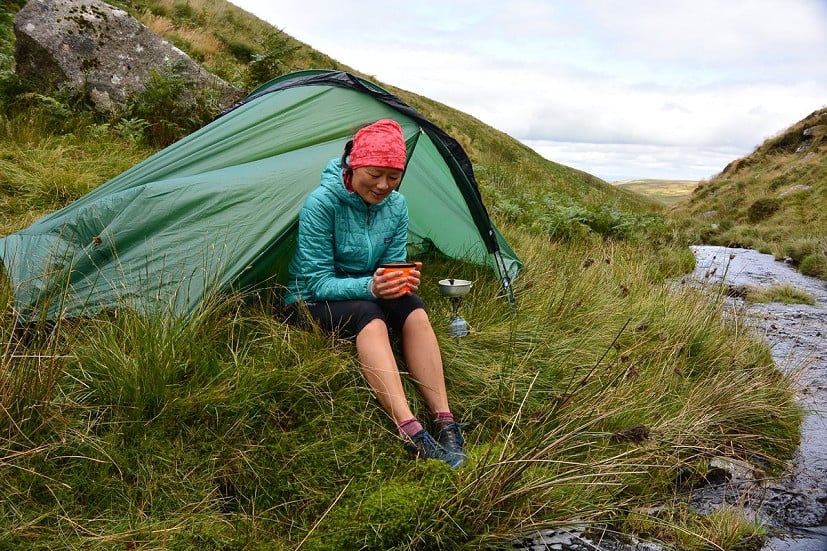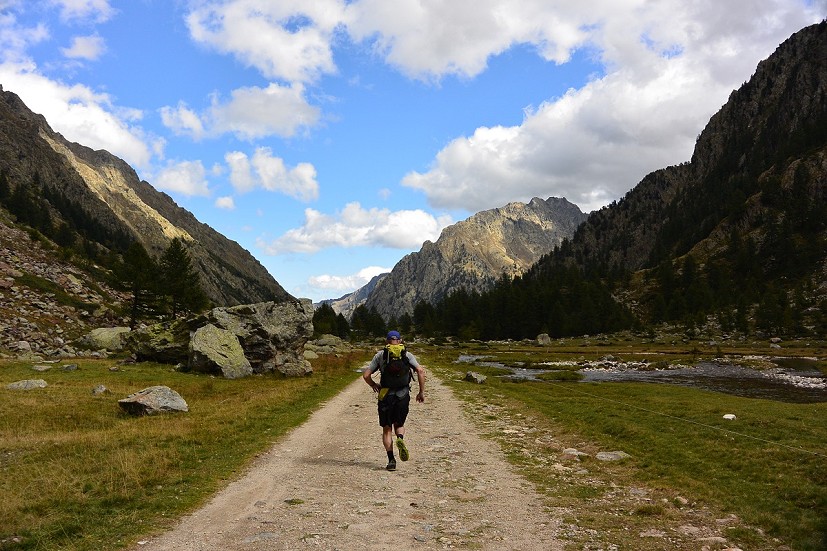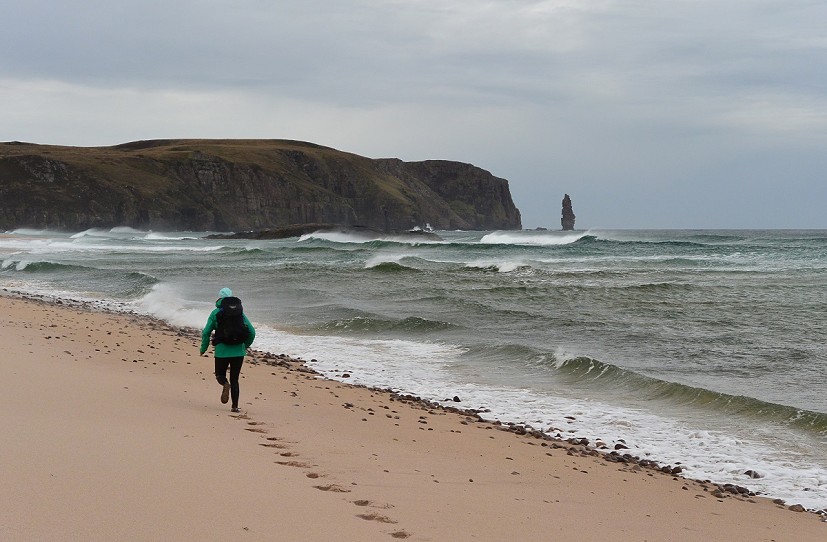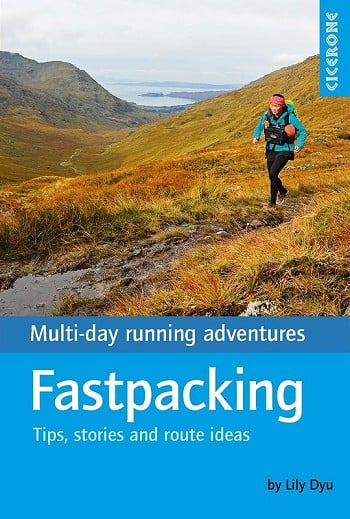Fastpacking - A Beginner's Guide
People were fastpacking long before the term was coined, but it does seem to be enjoying a surge of popularity. The marriage of trail running and long distance backpacking, fastpacking gets you out further for longer, scratching an itch that single day runs cannot reach while covering more ground than you would at walking pace. So what's it all about? And how should beginners get started? Who better than Lily Dyu, author of a new guide to the sport, to explain..?
Imagine yourself high in the mountains, running past blue-grey glaciers suspended from glistening slopes. Ahead of you, the trail snakes over black moraine alongside an icefall before disappearing into a long valley beneath endless peaks. An hour later, you rest briefly in an alpine meadow watching waterfalls tumble into a turquoise lake. Soon you're in forest, flying down single track with the sweet scent of pine in the warm air. Your pack - carrying the bare minimum - is snug and light on your back until you can throw it off at the next mountain hut. There your legs are tired from a day on the trails but your mind is buzzing with sights from the journey. Over dinner, you share stories with like-minded mountain lovers before creeping into your dorm bed. For any runner who loves travelling through the mountains this is running at its best. Welcome to the world of fastpacking…
Backpacking is great, but fastpacking is perfect for people who love both multi-day journeys and the buzz of running
What is fastpacking?
Fastpacking is a rapidly growing niche in the world of trail and fell running. Put simply, it's the hybrid of running, hiking and lightweight backpacking. It's a multi-day running trip carrying the bare essentials. Underpinning the activity is the principle of 'fast and light' – taking only what you need to stay safe and happy, and nothing more. This allows you to travel further and faster in a day compared with walking, by running whenever the terrain allows it. Whether you're a backpacker looking to up your pace (and fast doesn't imply running all of it!) or a runner in search of bigger adventures, fastpacking could be for you.
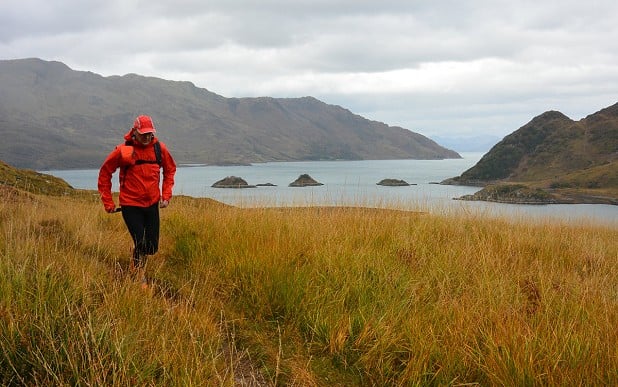
The growing appeal of running adventures
More and more people are using fastpacking as a way to travel and explore. You've probably read of Jenny Tough's epic expeditions running solo and unsupported across a mountain range on every continent. She has already ticked off the Tien Shan, High Atlas and Cordillera Oriental ranges (see left)! But fastpacking can also be as simple as an out-and-back trip from your doorstep or running one of the UK's many national trails. Before smashing the Spine race record this year in an astonishing 83 hours, Jasmin Paris first ran the Pennine Way in November 2015 by fastpacking it over six days, north to south, with her husband, to celebrate her birthday. On that journey the couple stayed at guesthouses and hostels and visited plenty of teashops – a contrast to the snatched shut-eye and sleep-monsters of the gruelling Spine.
The many styles of fastpacking
In running circles, the term fastpacking is used to mean many styles of multi-day running adventure. To purists, fastpacking means being self-sufficient through wild camping, but there are many types of trip: from running with a pack between overnight stops, like guesthouses, bunkhouses and hostels, to bothying in remote wilderness locations. Hut-to-hut running (or hut-hopping) is increasingly popular in places like the Alps, where networks of mountain refuges in spectacular locations provide hot meals and a bed, allowing you to live well and travel light. You can even fastpack the trekking trails in Nepal while staying at teahouses along the way.
Why go fastpacking?
Fastpacking isn't about times, T-shirts or medals. It's all about the experience. You could see it as adventure racing without the race. It's about exploring and enjoying your surroundings at your own pace. There is a special satisfaction in making a running journey powered by your own two feet and seeing your surroundings change as you go. Spending days immersed in the landscape and natural world through fastpacking is, for many runners, a much richer and deeper experience than a trail or ultra race. The activity connects us to our ancient ancestors who were hunter-gatherers, spending days on foot. And by carrying no more than you need, fastpacking provides a beautiful sense of simplicity and freedom.
Fastpacking isn't about times, T-shirts or medals. It's all about the experience. You could see it as adventure racing without the race
Fastpacking technique: A word about walking
Fastpacking is like ultra-running in that you will do a lot more walking than you would on a typical long run. This is due to the extra weight on your back and the fact that you're doing it for several days. When fastpacking, most people will usually walk the hills and run the flats and downhills (unless the terrain is very technical). A leisurely pace also gives you more time to enjoy the views.
So what's the difference between fastpacking and lightweight backpacking at a fast walk?
The two activities have many similarities, but with important differences. The gear approach is similar: you carry a lightweight backpack and your base weight is from your shelter and sleeping bag. But clothing and footwear choices are different: in fastpacking you'll be in running kit, carrying the requisite overnight gear (used interchangeably as warm hill gear) and full waterproofs for mountain weather. Your footwear is trail running shoes which, along with a lightweight pack, allows you to run and jog where ever the terrain permits. This is the key difference between fastpacking and lightweight backpacking.
This approach allows you to move faster than you would walking (terrain permitting) and thus you have options to go further, visit more places en route or perhaps finish earlier in the day. In all likelihood, unless you are a very strong mountain runner, many fastpackers may only cover the same daily distance as the fastest of the ultra lightweight backpackers. Why then bother fastpacking? You may well ask! The reason is running. Anyone who enjoys the endorphins and thrill of running through wild places will know the urge to break into a faster pace while on a hiking trail. Backpacking is great, but fastpacking is perfect for people who love multi-day journeys and the sensation and buzz of running.
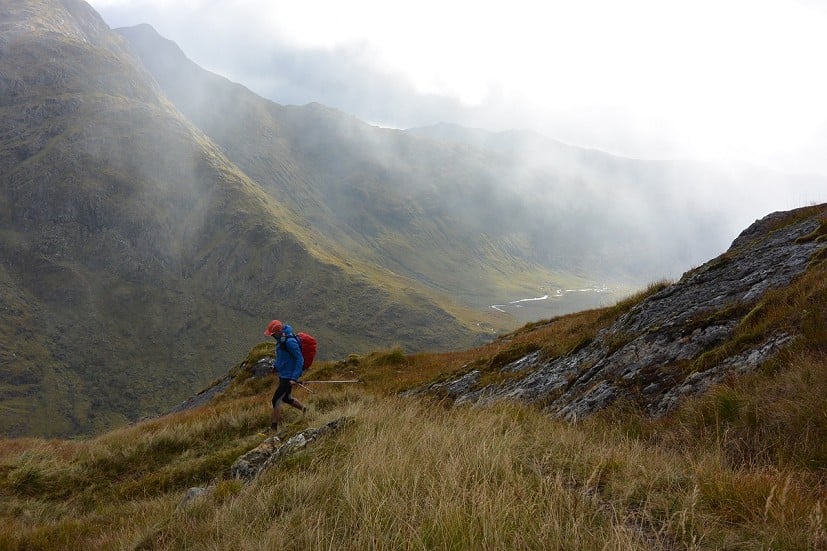
Safety
Like backpacking, the most important skill in fastpacking is your outdoor know-how. On any multi-day running trip it's critical to have the experience and knowledge to keep yourself and others safe in the mountains. In this respect, hill walkers and hill runners have an advantage over many road runners when going fastpacking. So whether you're a backpacker who feels the pull of bigger miles and a lighter load, or an adventurous hill runner who wants to tackle that long-distance trail, visit that bothy or try hut-hopping then read on for practical advice…
What to take
Your most indispensible item of kit will be your backpack. It's crucial to have a pack that is comfortable for multiple days running while carrying all your gear.
Obviously, if you are wild camping or using bothies you will also need a tent, stove, sleeping bag and mat as well as food. Your clothes will be a significant weight in your pack and the goal is to pack minimally while ensuring you have everything you need for the expected conditions and never compromising on safety. It's a classic balancing act that requires you to question whether every item has a place on your trip.
When packing, always consider multiple-uses for different items of gear. A pair of running tights will be travel-wear, evening-wear or running-wear when it's cold or wet. A fleece top for the evening will be an extra running layer if it gets cold. A buff could be a beanie, headband, travel towel or wrist sweat-band
Fastpackers will probably use running poles which are generally lighter than trekking poles and designed to be easily folded away and carried.
While more experienced ultra-runners might manage a hut-to-hut trip carrying only the compulsory kit for the Ultra-Trail du Mont Blanc (UTMB) race, others might want more gear – but always remember that pack weight will significantly affect your enjoyment of the trip.
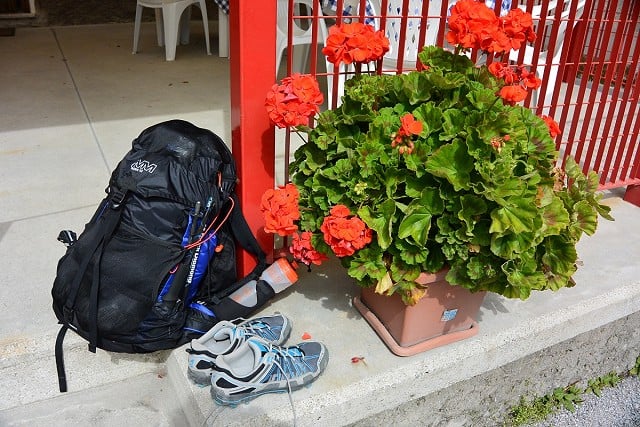
Pack weight
The weight of your pack is the most crucial factor for enjoyable and successful fastpacking! This cannot be over-emphasised. Aim for a total pack weight of 3–8kg. Anything above 8–10kg will be difficult to run with and increases your risk of injury. The rise in ultra-lightweight gear makes this much easier now, but don't get hung up on gear. It can be as simple as being ruthless about what you take and thinking carefully about your food choices. Some people even cut the straps off their packs and the handles off their toothbrushes to reduce weight – but there has to be a balance. That said, even when packing minimally, you should always have the right gear for the terrain and likely weather.
How fit do you need to be to go fastpacking?
Backpackers who love running, and hill runners who enjoy multi-day hikes are perfectly suited to fastpacking because of the strength gained from long hill-days. Jasmin Paris has attributed much of her record-breaking success in long fell running challenges like the Bob Graham Round to backpacking holidays trekking in the mountains. In fastpacking, you are much slower than on a typical run or race because you'll be mixing running with plenty of powerwalking. That said it's a good idea to start with a simple two-day trip to see how your body copes with back-to-back days on the trail and running with a pack.
Choosing your route
As important as it is to pack light, choosing your route is perhaps key to your enjoyment – whether you design your own or follow an existing one. Fastpacking is about running to a place you can't get to in just a day and there are many ways of doing this, from a short, out-and-back trip with an overnight stay, to doing a national trail over several days. You could use fastpacking to recce an ultra marathon route or plan your own journey lasting weeks. Some adventurers have even run around the world!
Over nearly a decade of fastpacking, I've run many of the UK's long-distance paths, such as the West Highland Way and Wainwright's Coast to Coast; devised my own routes such as a three-day traverse of Wales; wild camped on Dartmoor; run between bothies in the wilds of Knoydart; and enjoyed the comforts of European mountain huts in Italy, Switzerland and France. Just as enjoyable have been two-day micro-adventures, running on the Gower, through the Black Mountains and Brecon Beacons while staying at hostels and bunkhouses.
Whatever route you choose, key considerations are distance, height gain and loss, the technical difficulty of the terrain, navigation and safety. If you are not skilled enough to hike a route, then never fastpack it, since running increases your risk of an accident. Fastpacking presents unique challenges compared to hiking, since you will be in different footwear and probably carrying less equipment and clothing.
That said, some people have argued that going lighter and faster allows you to remove yourself from risks, like poor mountain weather, more quickly. This clearly depends on your experience and you should never compromise on safety when making gear choices. It's a classic balance of your experience, the likely conditions, terrain and carrying the necessary gear to be safe.
Getting started
It's a good idea to start with overnight trip, for example a circuit close to home that includes an overnight stay, or an out-and-back route. You could take the train somewhere and then run back to your start. Short trips allow you to build up experience of back-to-back running days while carrying a pack.
The UK's national trails are a great way to try fastpacking since generally these aren't technically difficult or mountainous and, with plentiful accommodation en route, they're perfect for 'fast and light' running adventures. If you want to wild camp while fastpacking, then Dartmoor and Scotland are the places to go. Alternatively the country's network of bothies make for great running expeditions. When staying in bothies, you will often meet new people, which could mean a memorable evening by a fire, sharing stories, food and a hip-flask. You will, however, still need to carry most, if not all, of the same gear as you would when wild camping.
If you're inspired to try fastpacking, here are some ideas for your own trip:
The South Downs Way, Cumbria Way and West Highland Way are great routes for your first multi-day run. The trails are friendly and easy to follow and there's plenty of accommodation if you don't want to carry camping gear. Daily distances and climbing can be kept to whatever you are comfortable with. You can even use walkers' baggage moving services on these routes if you want to just run with a daypack.
Run from the Irish Sea to the North Sea across northern England by following Wainwright's Coast to Coast route. Although it is an unofficial and mostly unsignposted trail, it attracts thousands of walkers each year. With its constantly changing scenery it also makes a superb running trip that will test your ability to navigate.
Run to a mountain bothy. Once a pumping house for the dam, Grwyne Fawr bothy in the Black Mountains is now the smallest of the MBA's nine bothies in Wales. A two-day, 40km circuit from Llanthony priory is a great way to sample the superb ridge running with an overnight stay at the charming, tiny shelter.
Hut-to-hut running is a wonderful way to experience the mountains. Try the Alta Via 1 route in the Dolomites for stunning trails, Italian huts and hospitality, or the Tour du Mont Blanc route for a taste of the iconic trails of the UTMB.
About the book
